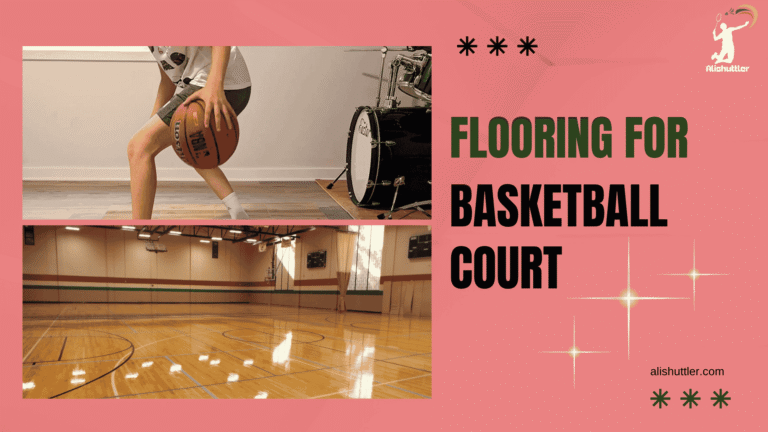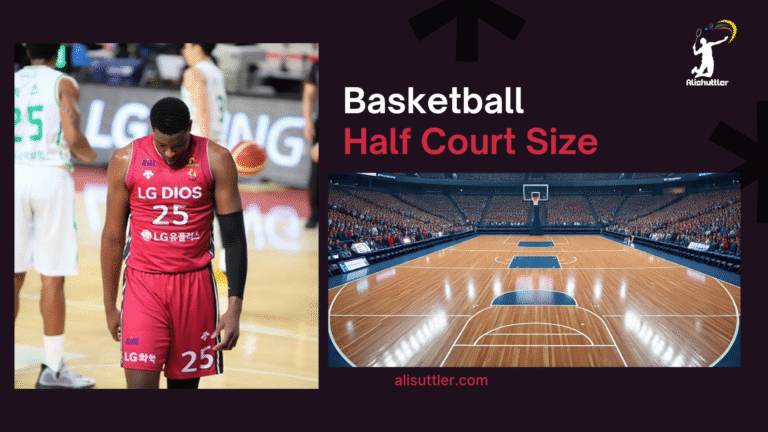Rentable basketball court is a basketball court that individuals or groups can reserve for a specific time period to engage in playing basketball.
These courts are located in gyms, sports complexes, schools or parks. Some locations provide indoor courts for all-season play, whereas others present outdoor alternatives for open-air games.
Rental times and prices vary by location and court type. The following sections dissect what it’s like to reserve and actually use these courts.
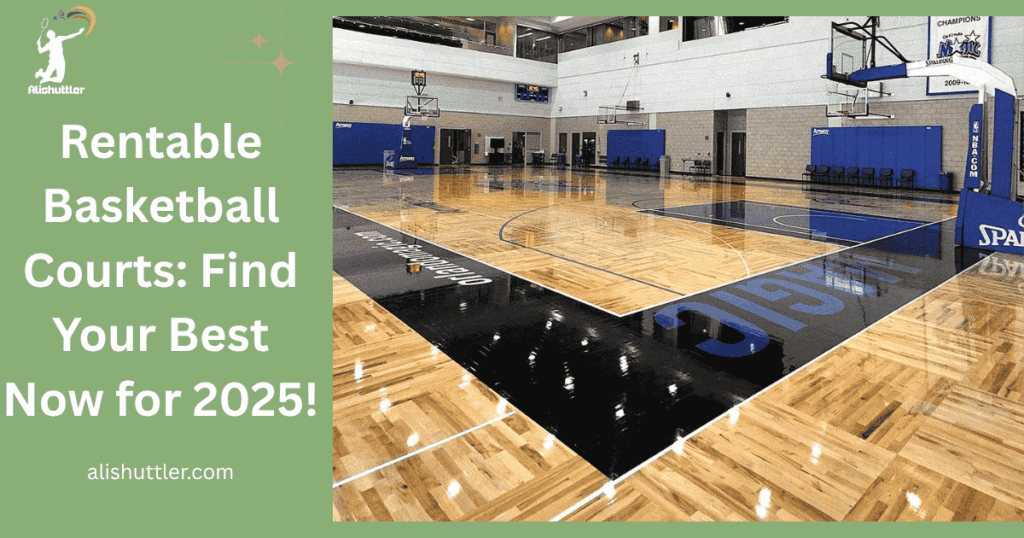
Finding Your Court
Renting a court isn’t easy, especially in big cities, where space is tight and courts fill up fast. It’s a bit of a process to discover your court, whether you desire a straightforward outdoor court or something more posh with magnificent views and pro gear. The rate can vary significantly depending on the location of the court, the amenities it provides, and the duration for which you require it.
Indoor or outdoor, both courts have their allure, if you know what to seek. A little homework searching online or connecting with other players can get you in the right zone.
1. Online Platforms
Looking online is the quickest way to view tons of rentals at once. Sports rental websites allow you to view prices, inclusions and book a court in just a few steps. Some even allow you to search by location or filter for things such as indoor vs. Outdoor courts, lighting, or parking.
Most players participate in social media groups where members post open courts and provide feedback. Mobile apps provide an additional means of obtaining a quick listing of courts in your vicinity. Apps frequently display maps, live availability, and even allow you to pay directly from your phone.
ALWAYS check reviews & ratings – no one wants to be in for a surprise – bad surfaces or missing gear is game ruining. Reviews typically note whether the court is crowded, clean, or has good staff – so you’ll know what to expect.
2. Community Centers
Community centers are frequently the most cost effective option, even for bargain hunters. They probably don’t have pro-level courts, but they keep rates low and typically have more than enough room for a pick-up game.
Seek out local tournaments or league nights — they’ll provide you with opportunities to play without reserving the entire court. Certain community centers operate seasonal programs or collaborate with groups to facilitate court booking.
These partnerships occasionally produce cooler equipment or extended hours of access, which benefits everyone in the community.
3. Educational Institutions
Schools, colleges and universities will sometimes rent out their gyms when classes or teams aren’t using them. Most have prescribed schedules, so you can schedule in advance or snag a slot during a school break when courts are less crowded.
Youth leagues fill these spaces, but even adults can occasionally reserve them for their own affairs. School gyms generally have good floors and simple facilities such as nearby restrooms, making them a great all around location for group play.
4. Private Facilities
Private sports complexes can be pricier, but they typically feature things like pro-grade floors, locker rooms, and seating for spectators. Some even provide parking or are in a great scenic location that films nicely.
Go by value—often the add-ons are generous, and will be worth it—especially for that ‘special occasion’. A few private spots hold tournaments or community days where you can play on the court for less or participate in bigger events.
5. Local Outreach
Chatting up nearby basketball clubs is a clever way to hear of rental options that don’t always get posted online. Community leaders occasionally assist with advocating for more open courts or longer hours.
Attending local games or sports events will connect you to others familiar with the area’s rental scene. TIP Word-of-mouth tips can result in hidden gems or special deals you won’t get anywhere else.
Key Considerations
Selecting a rentable basketball court is more than just selecting the nearest. There are so many things that influence the experience for players, organizers, and guests. We demystify the key considerations to keep in mind when choosing a court for your needs, from surface to location and amenities.
- Location is first on the list. Courts should be within easy reach of most players. A location accessible to transit, parking and safe streets is ideal for everyone’s comfort and security. Consider commute if you’ll be there frequently.
- Amenities can make or break the court experience. Scout out seating, restrooms and good lighting particularly if you’re going to play at night. Courts with room for equipment, concessions or scoreboards assist games to be more enjoyable and seamless.
- See when the court’s available. Certain places book up quickly, so inquire within about prime time, reservation policies, and whether you can cancel or reschedule a reservation. Be aware of any scheduled closures for maintenance, as well.
- Budgeting is important. It’s easy to go for the least expensive court, but temper price with quality. Investing a little more on a well maintained court usually translates into less hassles and a superior game.
- Outdoor court planning has additional specifics. Sun orientation counts, with north-south configurations slashing glare. Drainage is key, too: a slight slope (1–2%) keeps puddles from forming.
Court Quality
First, check the surface. Slick, hard surfaces reduce the potential for stumbles and falls. Hardwood is optimal for indoor play and outdoor locations may utilize rubber or concrete. Each alters ball bounce and grip, so select according to your play style.
Framing counts. Courts require periodic sweeps, sealants and repairs. Debris or cracks can cause player injuries and reduce court life. Neat, level court = security in playing.
Outdoor courts require sound drainage as well. A subtle pitch prevents rain from collecting. Without it, water sits, compromising the safety of play as well as damaging the surface over time.
Location
Convenience is key. Select courts near highways, transit, or parking. Safe neighborhoods are important, particularly if games are late. If you guys meet a lot, a midpoint location reduces travel for all.
The court oughta fit your crew. If you play with families seek out quiet areas. For larger groups, a location with a generous buffer zone (a minimum of 3m, and 5 – 10m in high-traffic areas) avoids congestion and maintains safety.
Amenities
Seek out bonuses such as benches and restrooms. These fundamentals help a LOT for comfort, especially in long games. Courts with equipment rentals are convenient in case not everyone can bring a ball or a hoop.
Certain courts provide scoreboards and night lights great for formal matches. Court-side food and drink options are a bonus. Be it a granola bar or a local coffee shop, these can assist players in energizing themselves and making things a bit more social at events.
Availability
See if your times are available, particularly on weekends or evenings. Enquire about early bookings to secure your place. Check the cancellation rules before you lose your deposits!
Look out for seasonal closures. There are so many outdoor courts that close for repair or bad weather, so be sure to prepare accordingly.
Understanding Costs
When you rent a basketball court, you’re not just paying for minutes on the floor. Costs can change depending on the style of court, time reserved, and add-ons provided. Comparison shopping prevents sticker shock and provides more bang for your buck.
| Rental Option | Typical Cost (per hour) | Notes |
|---|---|---|
| Indoor Full Court | $40–$80 | Higher for prime hours/locations |
| Indoor Half Court | $25–$45 | Lower cost, fits small groups |
| Outdoor Full Court | $15–$35 | May lack climate control |
| Outdoor Half Court | $10–$20 | Good for casual play |
| Membership (Monthly) | $60–$120 | Unlimited access, some restrictions |
| Package Deal (10 hours) | $300–$700 | Upfront payment, saves per session |
Hourly Rates
Basketball court reserve rates vary by location and court type. Indoor courts, that utilize more expensive surfaces such as maple hardwood, are generally pricier — usually $40 to $80 an hour for a full court.
Outdoor courts are generally less, even down to $10 an hour for a half court, although weather is a consideration. Booking time matters too. Several courts are more expensive during peak hours—usually evenings or weekends.
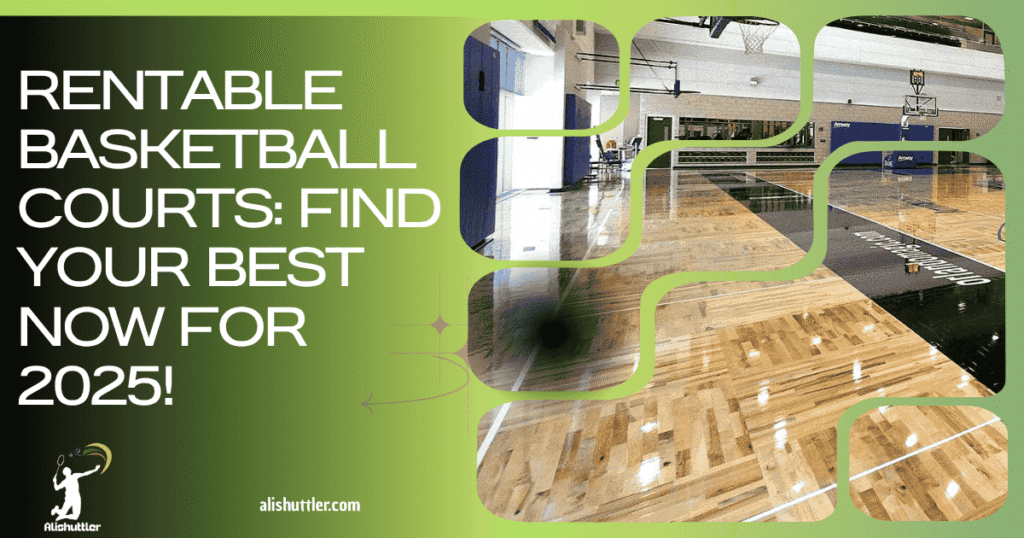
Weekday mornings or early afternoon bookings can save. Renting for longer blocks can reduce that hourly rate. Some venues provide discounts for booking two or more hours at once. ALWAYS inquire for these offers.
Seek courts that offer a good combination of price and quality. Some discount sites may have tattered surfaces.
Memberships
Certain sports centers offer monthly or yearly memberships. These typically enable unrestricted play with less booking annoyance. For regular players, the fee—typically $60 to $120 a month—can be lower than paying by the hour each time.
Over a year, a membership can save you hundreds over paying-per-session, especially if you play a few times a week. Family or group memberships reduce that cost even more, dividing it among multiple players.
Memberships can include add-ons, such as tournament discounts or complimentary locker use. Know what you’re getting into.
Package Deals
Others package hours, providing a discounted rate for several bookings. For instance, a 10 session package could cost $300, which saves you $100+ over single rentals. They’re great deals for teams or regular crews.
Seasonal promotions summer or off-peak discounts drive down expenses. Certain venues collaborate with local gyms or cafes, providing perks such as complimentary beverages or guest passes.

Flexibility counts as well. Find packages that let you change or cancel your schedule without huge fees.
Hidden Fees
Beware of additional fees. Cleaning fees, equipment rental, or damage deposits can add up. Check whether scoreboards, balls or training gear are extra. Some courts count these, others ignore them.
Read the lease! Just no surprise overtime or late cancellation charges. Verify payment conditions to figure out exactly when and how much to pay.
The Renter’s Edge
Rentable basketball courts are more than just a court. With flexible rentals, amenities, and extras such as event spaces and equipment, renters can customize their experience for everything from pick-up games to tournaments. These courts tend to be community hubs, which makes them a great asset for people, teams, and organizations.
Off-Peak Value Rentable Basketball Court
For those who think ahead, off-peak hours can spell huge savings. Most facilities have reduced rates in the early mornings or late evenings, particularly during the week. For a crew watching expense, these shifts are worth a glance.
Stuffing games or team practices into off-hours provides players with more space and less distractions. It aids skill work because there are less distractions and the court is not packed. Teams save cash and have additional time to play perfect for improving their play.
With less bodies in the way, it’s more convenient for coaches to conduct drills, and players don’t feel pressured by the new influx of players especially with drills!
Long-Term Booking Rentable Basketball Court
Long-term bookings are available for people who want consistent access to the same court. This comes in handy for teams with fixed schedules or groups that require a consistent location for practice, matches, or other recurring events.
They don’t have to be daily, and by booking ahead for a month or a season, renters often get a better rate. Most venues are negotiable on price for a longer commitment. Having a home-base means fewer minutes wasted hunting down empty courts each week.
The other advantage is flexibility. A lot of facilities permit renters to change their schedule should something shift, which makes these long-term deals viable. This matters for groups with changing needs or erratic schedules.
Community Perks
- Discounted rates for local organizations and youth groups
- Entry into exclusive events like tournaments and sports clinics
- Priority booking for members during peak seasons
- Invitations to community Rentable Basketball Court days with free entry
- Partnerships with local businesses providing food or gear discounts
- Opportunities for fundraising events or charity games
- Exclusive member access to meeting rooms and the in-house cafe
It creates a sense of community, which is key to expanding your access to courts. Many facilities partner with groups to back youth Rentable Basketball Courts, which creates a deeper local sports culture.
Trial Sessions Rentable Basketball Court
Trial sessions allow renters to determine if the court suits their needs. It’s an opportunity to test out the hardwood floor, the lighting and even the equipment. After a session, teams can discuss what worked and what didn’t.
This review simplifies future booking decisions. Trial runs provide renters time to introduce themselves to facility staff and experience the space, including such bonuses as the 18×28-foot meeting room, the 30×70-foot cafe, and available equipment.
Establishing a rapport with the management can facilitate planning for future events.
Indoor Court Inspiration
Indoor courts provide people with an opportunity to play, practice, and enjoy themselves 12 months a year. They keep us all moving, come rain or shine. When you rent an indoor court, you have a controlled temperature, you have excellent lighting, and you have much fewer potential distractions. Courts aren’t just for ball they can accommodate volleyball, futsal or fitness classes, so they’re a savvy option for lots of groups.
Classic Hardwood
| Flooring Type | Durability | Aesthetic Appeal | Maintenance | Customization |
|---|---|---|---|---|
| Hardwood | High | Timeless | Moderate | Easy |
| Synthetic Vinyl | Medium | Modern | Low | Moderate |
| Rubber | Medium | Functional | Low | Limited |
Hardwood courts are prized for their durability and timeless aesthetic. The natural finish evokes that classic spirit that fits both pickup games and tournament play. Numerous professional leagues and schools opt for hardwood due to its quality and feel underfoot.
With proper maintenance, roughly sweeping and mopping, these floors endure for years, but they tend to be more expensive to repair if compromised. While most opt for classic painted lines, others even add custom logos and borders to give the court character.
Modern Minimalist
A minimalist Rentable Basketball Court puts utility ahead of all else. Clean lines, smooth colors, and wide open space make it both easy to use and easy on the eyes. These patterns suit lots of sports, slide a couple of pieces, and you’re ready for volleyball or a fitness class.
Custom builders are now using new materials, such as high-quality vinyl or rubber, that are both easy to clean and soft to play on. Big windows or skylights bring in daylight, and air vents keep air flowing to keep players crisp and secure.
The open layout means less obstructions, which reduces injury risk. This allows for groups to easily convert the court for other games or events. Multipurpose courts assist renters in maximizing their value, both in terms of cost and time invested.
Themed Designs
While others display team pride or individual style. Custom graphics, bold colors and special logos allow owners to create an atmosphere that is distinctive. This allows players and fans to feel more connected to the court.
Rentable Basketball Courts could employ club colors, mascots, or even local culture-inspired patterns. Other spaces are decorated with movie, music, or city-inspired artwork, making it a cool, memorable, and fun space for all.
A themed court can help set goals and keep folks inspired. Players typically report that playing in a space that reflects their personality allows them to concentrate and have fun on the Rentable Basketball Court.
Multi-Sport Layouts
Multi-sport layouts incorporate lines and markings for multiple games. Portable hoops, nets and benches allow the area to transform quickly.
Synthetic floors provide an excellent surface for just about any sport ranging from a Rentable Basketball Court to indoor soccer. These designs utilize every meter, so no space is wasted.
Budget Rentable Basketball Court Construction
Constructing a rental basketball court in your backyard or community space requires transparent budgeting and wise decisions. The cost to construct an outdoor basketball court can vary from $4 to $16 per square foot. If you desire a slicker play and more traction, an epoxy coat will add around $6 to your per square foot cost.
For a mini-rentable Basketball court, perhaps 30′ x 30′, the overall price ranges from $3,300 to $15,000. For a half-court, prices range from $8,600 to $38,000. If you’re talking something inside, with the subfloor, main floor, and labor, you’re looking at anywhere from $10,000 to as much as $150,000!
Selecting the appropriate surface is not only cost effective, but extends the life of the court. Asphalt is the less expensive option, running $2,700 to $6,300 for a full court. It dries super fast and is simple to repair, although it does wear faster.
Concrete runs a bit higher—$15,000 to $45,000—but it’s more durable and endures hard use. Courts should be resurfaced every five years or so, depending on your amount of players and weather. Choosing a resilient surface from the get-go can keep expenses lower down the line.
It doesn’t have to be first-rate materials for a good court, either. A lot of people choose Champion grade floors for a clean and even appearance, but Premium (with wood’s marking marks) or Club grade (a rustic vibe) can be less expensive and still work great. These grades let you pair your wallet with your style.
Labor can be a huge chunk of the total spend. Getting your hands dirty a bit, whether it’s painting lines or installing hoops and fences, saves you money. Paint the court lines: $200 to $6,000, depending on size and detail.
Doing this job yourself, with a stencil and outdoor paint, can help keep costs down and provide that good pride of accomplishment. A Required Rentable Basketball Court by local rules usually requires a building permit, at $200 to over $1,000 in fees.
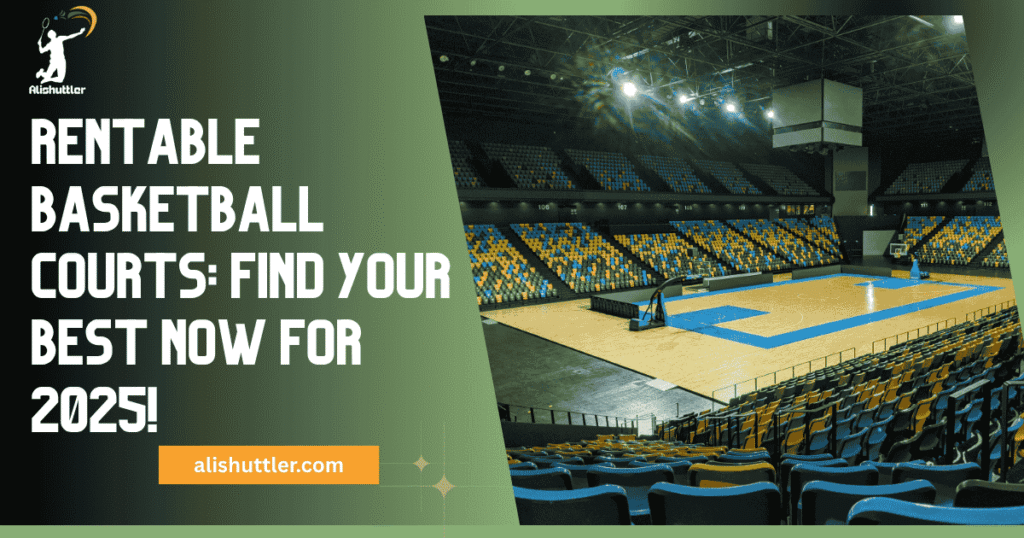
Review these regulations before you begin to avoid procrastination penalties. Getting the right papers helps sidestep problems if you intend to rent out the court.
Final Thoughts on Rentable Basketball Court
So, when deciding on a nice basketball court to rent, be clear on what matters to you most. Good lighting, safe floors and fair prices help you get the best deal. A few locations offer extra benefits such as convenient booking or equipment to play with. Indoor courts keep games rolling rain or shine, and budget builds assist groups with limited funds play on. Globally,
Even more seek out secure, new spaces to play and connect. To be in the know, watch your local listings and online maps. Courts evolve quickly, and new alternatives emerge constantly. Need the prime location for your next game or event? Review deals, what fits your game plan.
Frequently Asked Questions
How do I find a rentable basketball court near me?
Look on the web or sports facility guides. Several gyms, schools, and community centers advertise rentable courts. See user reviews and ratings for authenticity.
What should I consider before renting a basketball court?
Verify the court’s location, dimensions, surface, and facilities. Just be sure it suits your group’s requirements and is convenient to reach.
How much does it cost to rent a basketball court?
Depending on where you are, the quality of the court and time slots, rental prices fluctuate. Rates go from 10 to 50 USD (9-46 EUR) an hour.
Can I rent a basketball court for private events?
Sure, the majority of courts can be rented for private games, tournaments or events. Verify the arrangements and group size restrictions with the location.
Are indoor basketball courts more expensive to rent than outdoor courts?
Indoor courts tend to be more expensive because of superior amenities and protection from the elements. Prices vary by location and amenities.
What equipment is included with a court rental?
Most courts come with hoops, nets, and basic lighting. Balls and other equipment might not be provided, so confirm with the venue beforehand.
How can I save money when renting a basketball court?
Reserve your time for off-peak hours or share the fee with a crew. A few locations provide reductions for extended or frequent renters.


